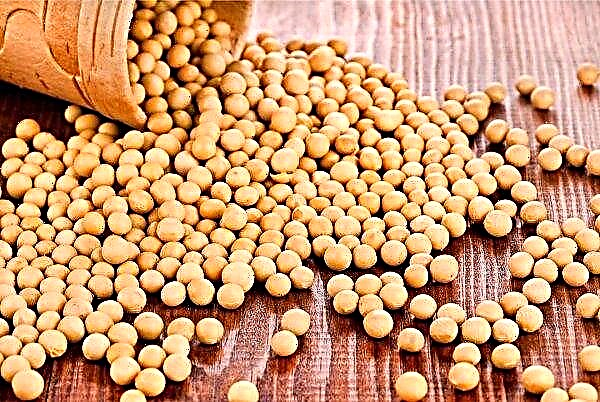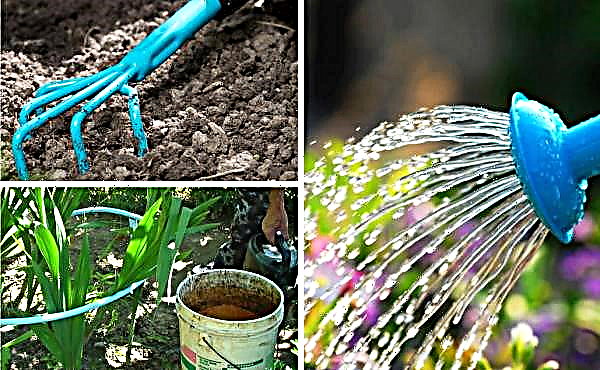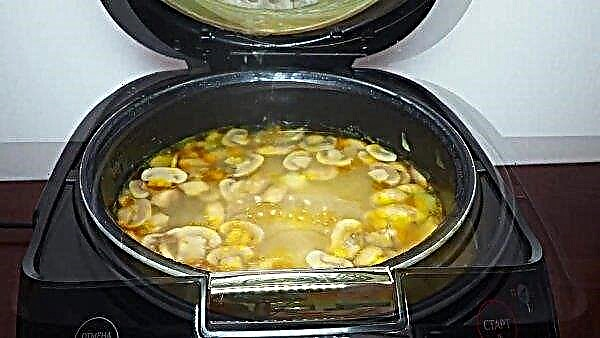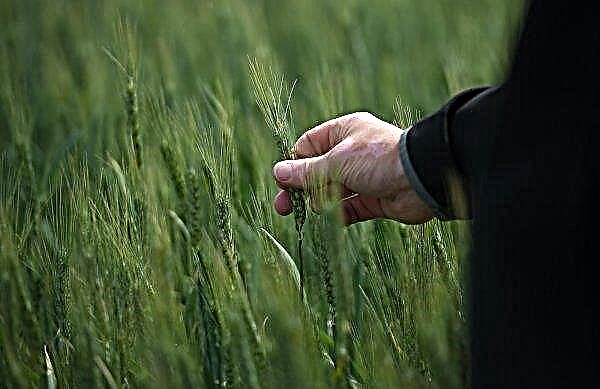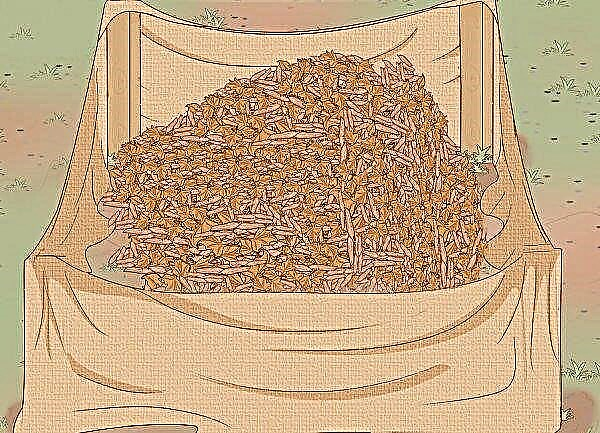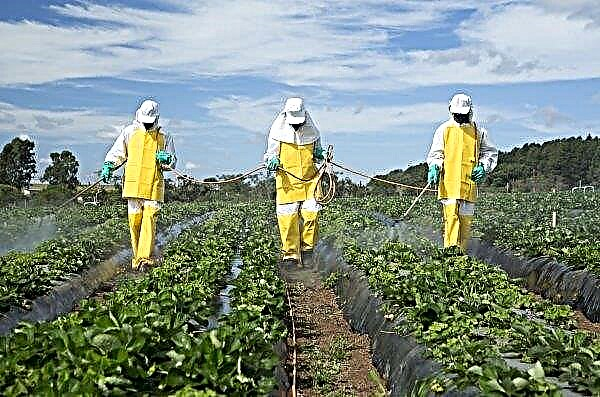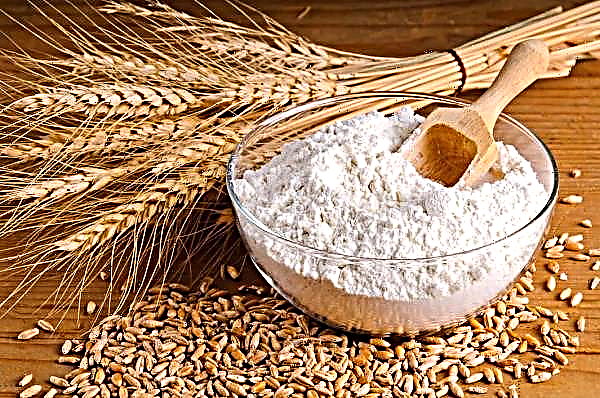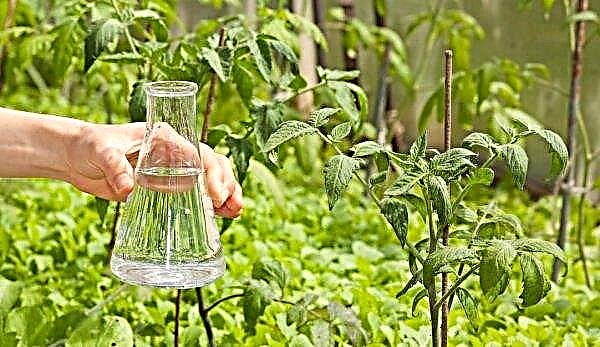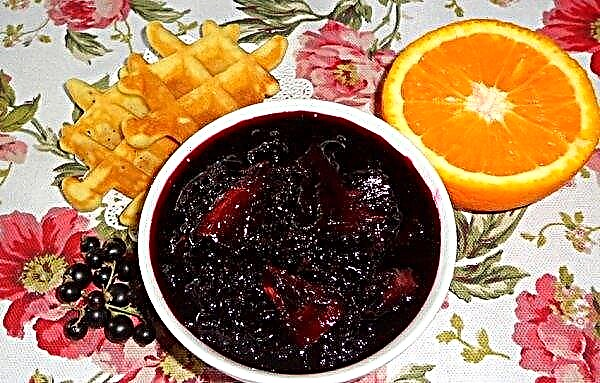Even experienced summer residents can face serious plant diseases. Popular potatoes are often affected by such a dangerous disease as rot. It can destroy most of the crop, so it is important to know how to recognize it and how to deal with it.
Description of Potato Rot
Rot can affect different organs of a potato plant and be provoked by various pathogens, which means they will require different treatment and prevention. We offer to get acquainted with the description of the most common types of rot. In total there are about 20 of them.
Did you know? Potatoes were cultivated 7–9 thousand years ago in the territory that Bolivia occupies today. The inhabitants of South America, in addition to eating tubers for food, also worshiped this plant.
Wet
Wet or soft rot is excited by saprophytic bacteria that penetrate the tubers through damage. The fruits rot even in the ground, or already in storage. On the field, wet rot more often occurs with high and prolonged humidity, that is, during frequent precipitation, as well as on heavy soil. In storages - at high temperatures (above + 5 ° С), high humidity, as well as during long-term storage in the temperature range of -1 ° С ... + 1 ° С. When affected by wet rot, the tuber becomes soft, an unpleasant smell emanates from it. If you press it, a yellow-brown liquid is released at the place of pressure. At first, the rot has a white color, but gradually turns black.
When affected by wet rot, the tuber becomes soft, an unpleasant smell emanates from it. If you press it, a yellow-brown liquid is released at the place of pressure. At first, the rot has a white color, but gradually turns black.
Dry
Dry or brown rot affects potatoes most often. It is able to spoil up to 40% of the crop. The fungus that causes it damages the roots and tubers. Infection occurs through plant debris, soil, infected fruits. The fungus penetrates through damage caused by late blight or the harmful activity of insects. The fungus attacks the plant at all stages. The first symptoms become noticeable even during the release of flowers - on the bushes the leaves of the upper tier lighten and fade. Subsequently, symptoms appear on the stem - its lower part becomes brown, covered with a pinkish or orange coating. Indented spots of gray color form on the tubers. When cut, you can find inside the void with a white mycelium.
The fungus attacks the plant at all stages. The first symptoms become noticeable even during the release of flowers - on the bushes the leaves of the upper tier lighten and fade. Subsequently, symptoms appear on the stem - its lower part becomes brown, covered with a pinkish or orange coating. Indented spots of gray color form on the tubers. When cut, you can find inside the void with a white mycelium.
Did you know? In the Inca calendar, daytime was measured by the time interval over which the potatoes were cooked (about 60 minutes).
Fomoznaya
This kind of disease develops if during the period of growth and green mass gain the plant was cool and had a lot of rainfall. When infected, rounded spots begin to appear on the fruits, reaching 2–5 cm across. The peel remains intact, however, the insides of the tuber can almost completely rot. Also, brown spots can sometimes form on the lower part of the stem of a diseased plant, and the tops can rot.
Roundabout
The bacteria that cause this type of potato rot only infect tubers that begin to develop or are stored. The development of the disease provokes damage during harvesting or during the attack of harmful insects. After the defeat, the whole potato rots, leaving only a white, foul-smelling mass.
Rubber
This variety got its name due to the fact that when infected, spots appear on the fruits, the fabric under which resembles rubber. When cut from the tuber, the smell of rotten fish comes out. Also, the disease can affect the tops. Most often develops at temperatures above + 25 ° C.
Causes and source of infection
As can be seen from the description of rot, the main reasons for their development are:
- poor tillage before planting;
- prolonged precipitation;
- improper care (overfeeding with nitrogen, waterlogging);
- untimely treatment of diseases and pests;
- mechanical damage to tubers during harvesting;
- damage to the peel of the fruit by harmful insects, for example, wireworms;
- storage under inappropriate conditions (most often at warm temperatures in combination with high humidity);
- bulk storage of the crop when the fruits warm up to + 50 ° C;
- storage of crops in stuffy conditions, in the absence of ventilation, poor ventilation and poor oxygen availability.
Important! Potatoes that have been stored for a long time at 0 ° C must be used as intended in the near future. For long-term storage, it is no longer suitable.
What to do and how to deal with potato rot
Unfortunately, there are no drugs for treating rot. The owner of the potato can only notice the problem in time and prevent it from spreading to the entire crop. It is also necessary to carry out preventive measures and timely control of diseases and pests that provoke the development of rot. Here are a few ways to deal with rot, which should proceed immediately as soon as the first signs are detected:
Here are a few ways to deal with rot, which should proceed immediately as soon as the first signs are detected:
- If rotten tubers are found in the store, then they must be urgently disposed of, since through them infection of healthy fruits will occur.
- Also, all potatoes that were near the infected at a distance of 20-30 cm are subject to seizure.
- In the storage it is necessary to set the air temperature from + 1 ° С to + 3 ° С and air humidity of 85–90%.
- Establish good air circulation in the storage area.
Preventive measures
In order to prevent rotting of potatoes, preventive measures should be taken:
- fertilize in accordance with the recommendations, avoiding overfeeding with nitrogen;
- make sure that only high-quality planting material is taken for planting;
- adhere to crop rotation rules;
- choose cultivars resistant to rot;
- Do not plant plants in areas with heavy soil and waterlogging;
- if necessary, process planting material before planting with Fitosporin (40–50 g per 100 kg), Bactofit (300–500 g per 100 kg);
- remove tubers when the soil dries;
- clean carefully using special tools to minimize the risk of damage to the fruit;
- during storage do not violate the recommended temperature and humidity conditions;
- thoroughly clean and disinfect the storage (3% solution of lime or 5% solution of copper sulfate);
- place intact and uninfected fruits in the store;
- transport the crop as carefully as possible;
- before placing in the storage of fresh fruits, carry out their processing with the drug "Max KS" (0.2 l per 1 t);
- to further protect the tubers from fungi and bacteria, shift the layers of potatoes with rowan, fern and wormwood leaves.

Is it possible to eat potatoes affected by rot
The answer to this question is unequivocal: in no case should rotted potatoes be eaten. You should not do this, even if not the whole tuber is affected by rot, and the affected part can be removed. Malicious bacteria and fungi that provoke the development of rot, getting inside the human body, lead to acute poisoning, damage to the digestive tract and other negative consequences.
Important! It is forbidden to eat green potatoes - it contains a large amount of the toxic substance solanine, which can cause serious harm to human health.
So, rot is a dangerous disease of potato, which leads to massive loss of crop. It can develop even when the tubers are in the soil, or hit them immediately after harvesting. In order to prevent it, it is necessary to apply preventive measures, create optimal conditions in the storage of crops and carefully select the fruits for planting and storage.

